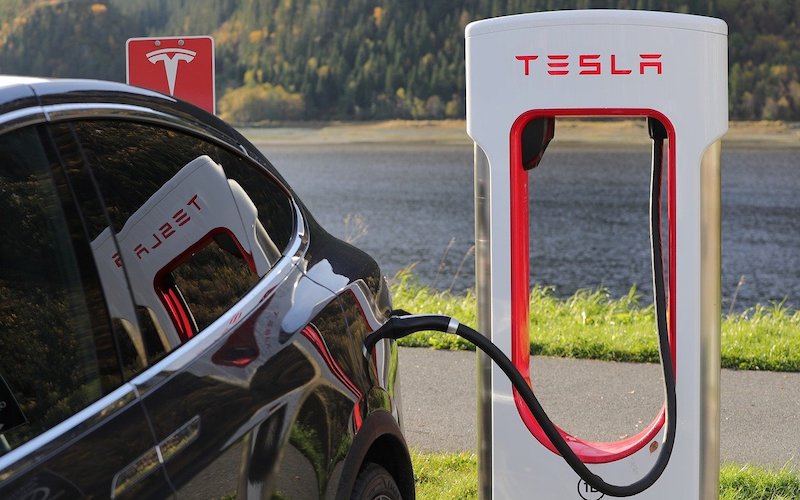It’s no secret that electric vehicles have a number of environmental benefits; however, it’s important that we take a critical look at this technology, rather than blindly follow it as our environmental savior.
“We will not stop until every car on the road is electric.” – Elon Musk
This quote, credited to what many consider the Father of the Electric Car Craze, paints a picture for an electric future. While it may be some time before every car on the road is electric, there is a definite trend in that direction. According to Statista, over 1.93 million electric vehicles were in use, worldwide, in 2017, up from 1.18 million in 2016.
While Elon Musk may have pioneered the trend, his feelings about electric cars aren’t completely unique. Carlos Ghosn, former CEO of Renault-Nissan, was once quoted, “The time is right for electric cars – in fact, the time is critical.”
The excitement around electric cars makes sense. Electric vehicles (EVs) are much more eco-friendly than their gas-guzzling counterparts. A focus on EVs reduces our dependence on fossil fuels. EVs are also being made more affordable as more and more companies are producing them. In fact, a number of mainstream automobile manufacturers have pledged to go full electric.
In 2017, Volvo pledged that all of their vehicles produced after 2019 would be electric or hybrid. That same year, Jaguar made the same pledge starting after 2020. Big rig trucks are also moving in the direction of electric. Even Harley Davidson has been developing an electric motorcycle.
However, with any popular technology, it’s important to take a critical look. Electric vehicles have become popular for their low emissions, but how low is their environmental impact, really? Emissions is just one part of the equation. In the case of EVs, two main issues to consider are a concept called “well-to-wheel” emissions and the end-life of EV batteries.
Well-to-Wheel Emissions
Well-to-wheel emissions is an overarching term which includes the greenhouse gases and air pollutants that are emitted to produce the energy being used to power an EV. While EVs don’t run on gasoline, the energy they run on has to come from somewhere.
Vehicle emissions can be divided into two general categories: air pollutants and greenhouse gases (GHGs). In the case of conventional vehicles with an internal combustion engine, pollutants and GHGs are emitted directly through the tailpipe, as well as through evaporation from the vehicle’s fuel system and during the fueling process. On the other hand, what is so intriguing about EVs is that they produce zero tailpipe emissions, significantly lowering their direct emissions.
This is where well-to-wheel emissions come in, including all pollutants and GHGs related to fuel production, processing, distribution, and use. For gasoline, this involves the extraction, refinement, distribution, and use of petroleum. On the other hand, most electric power plants produce emissions, too, and those emissions should be taken into account when considering the environmental impact of EVs.
According to the U.S. Department of Energy, fully electric vehicles emit an average of 4,450 pounds of CO2 each year. For comparison, conventional cars emit over twice as much annually. While EVs do produce fewer emissions, it is important to remember that this isn’t a perfect technology. People should not blindly assume that EVs are a no-emission super-technology.
In order to truly be carbon neutral, EVs would need to get their energy from renewable energy resources. This means utilizing solar-powered charging stations or connecting your home to a local wind farm or installing solar panels on your home.
Where your energy comes from affects the emission impact of your EV. Currently, across the U.S., 35.24 percent of energy comes from natural gas and 27.52 percent comes from coal. Alternatively, only 6.86 percent, 6.6 percent, and 1.6 percent of energy comes from hydro, wind, and solar power respectively, meaning that EVs are only as sustainable as their energy source.
End of Life
There is one key question that has loomed over the EV industry since its inception: what to do with the lithium-ion batteries (LIBs) when they wear out. If unfamiliar with the concept of a lithium-ion battery, look no further than the smartphone in your pocket. A LIB is a type of rechargeable battery often used for portable electronics, and also used in EVs.
While these batteries are rechargeable, they do not last forever, and eventually their ability to hold a charge will deplete. What happens after that is a bit complicated. The Guardian reported that in the EU, as few as five percent of lithium-ion batteries are recycled. Not only do these batteries carry a risk of giving off toxic gases if damaged, but core ingredients such as lithium and cobalt are finite and extraction can lead to water pollution and depletion. (However, it should be acknowledged that at least part of the reason for the low recycle rate of LIBs is that many old electronics get stowed away in the bottom of drawers.)
Because of this low recycling rate, certain regulations are being established to motivate EV manufacturers to take more responsibility for their product’s end-of-life processes. In the EU, the makers of batteries are required to finance the costs of collecting, treating, and recycling all collected batteries. This has even led to certain partnerships between manufacturers and recycling companies. Umicore, a battery recycling giant in Europe, has deals with both Tesla and Toyota to recycle their batteries.
Unfortunately, the problem doesn’t end there. While commercial smelting processes can easily recover many metals, like cobalt and nickel, they can’t recover lithium – that costs extra.
In June 2017, Morgan Stanley forecasted no recycling of lithium in the decade ahead, and that there risked being insufficient recycling infrastructure in place when the current wave of batteries die. “There’s a difference between being able to do something and it making economic sense,” explained Jessica Alsford, head of Morgan Stanley’s global sustainable research team.
It would seem that the finances and infrastructure just aren’t quite there for full recycling capabilities, at least not yet. In the meantime, the answer could be reusing. Nissan, for instance, partnered with power management firm Eaton to have its car batteries reused for home energy storage.
Aceleron, which was recognized by Forbes as one of the 30 most exciting tech startups in Europe in 2017, also believes in the reusability of these batteries. According to the startup, car batteries can still have up to 70 percent of their capacity when they stop being good enough to power electric vehicles, which makes them perfect for functions such as home energy storage. Aceleron has a patented process for breaking down, testing, and repackaging the batteries for home use.
It’s a reminder that technology needs to be viewed through a critical lense. While EVs, and those who develop them, have helped curb emissions, it’s important to acknowledge the weaknesses of this new technology. It is only by this constant scrutinization that we’ll be able to achieve a more sustainable future.










